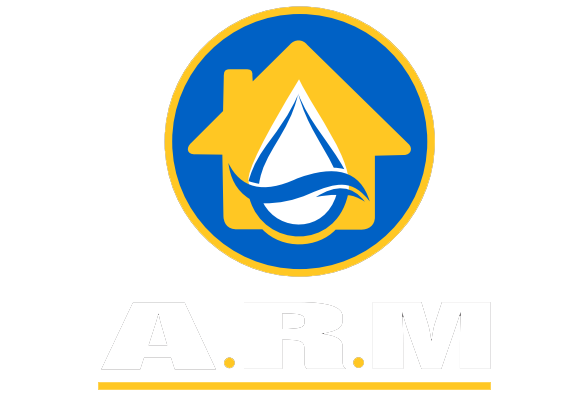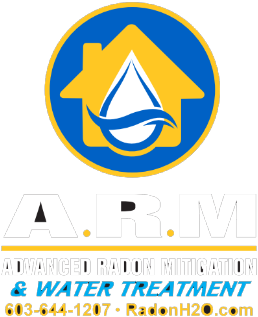In an age where more and more contaminants are being discovered in our water supply, ensuring your home has clean, safe water is no longer optional; it’s essential. One group of harmful chemicals that has drawn increasing attention over the past decade is per- and polyfluoroalkyl substances, commonly known as PFAS. Among these, PFOA (Perfluorooctanoic acid) is especially concerning. Linked to a variety of serious health problems, including cancer, thyroid disease, and developmental issues in children, PFOA is a persistent chemical that doesn’t break down easily in the environment or the human body. The good news? With advanced PFOA removal water purification systems, you can protect your family and enjoy peace of mind knowing your water is free from these toxic substances.
Understanding the PFOA Problem
PFOA is a synthetic chemical once widely used in industrial applications and consumer products such as Teflon-coated cookware, firefighting foams, waterproof fabrics, and food packaging. Although manufacturers have largely phased it out, PFOA remains in the environment and in many cases, our groundwater. Because it’s water-soluble, PFOA can travel through soil and contaminate private wells and public water supplies. This is particularly dangerous because exposure to even low levels of PFOA over time can lead to adverse health effects.
A growing number of states and municipalities are beginning to regulate PFOA levels in drinking water, but federal standards are still catching up. That means the burden often falls on homeowners to treat their water at the point of use or entry. This is where PFOA removal water purification systems come into play, offering a reliable way to eliminate PFOA and other contaminants before they ever reach your faucet.
How Do PFOA Removal Water Purification Systems Work?
PFOA is a persistent and challenging contaminant. Not all filtration systems are capable of effectively removing it. Systems that rely on basic pitcher filters or faucet-mounted attachments are insufficient. Instead, advanced systems like granular activated carbon (GAC) and reverse osmosis (RO) are the most effective for PFOA removal.
1. Granular Activated Carbon (GAC) Filtration
This method uses a tank filled with carbon media to absorb and trap PFOA molecules from the water as it flows through. GAC filtration is widely used in point-of-entry systems to treat water for the entire home.
Pros:
- Excellent for treating large volumes of water
- Can be used for whole-home filtration
- Improves taste and smell by removing chlorine and organics
Cons:
- Requires periodic media replacement (usually every 2–4 years)
- Effectiveness depends on flow rate and concentration of contaminants
2. Reverse Osmosis (RO) Filtration
RO systems use a semi-permeable membrane to remove contaminants on a molecular level, including PFAS compounds like PFOA. These are most often installed under the kitchen sink to treat drinking and cooking water.
Pros:
- Removes a broad spectrum of contaminants, including PFOA, lead, arsenic, and more
- Provides ultra-purified drinking water
- Highly effective even at low concentrations
Cons:
- Slower filtration speed
- Wastewater generated during filtration
- Typically used only at a single faucet
Why Homeowners Are Turning to PFOA Removal Water Purification Systems
The risks of long-term PFOA exposure are well documented. Communities across New Hampshire and the country are learning their drinking water contains this dangerous chemical, often after decades of use. While regulators work to improve public systems, many homeowners are choosing to take matters into their own hands by installing dedicated purification systems.
The Benefits Include:
- Reduced health risk from cancer, liver damage, and hormone disruption
- Better tasting, odor-free water for drinking, cooking, and bathing
- Protection for your family, including children and seniors who are more vulnerable
- Environmental sustainability, reducing dependence on bottled water
- Improved appliance and plumbing performance, especially when systems are integrated with softeners or pre-filters
When to Consider a PFOA Removal Water Purification System
Wondering if your home is at risk? Here are some common scenarios where PFOA removal is strongly recommended:
- Your home relies on a private well
- You live near a military base, industrial facility, airport, or known PFAS contamination site
- Your town has issued a PFAS-related advisory or alert
- You've recently moved and want to ensure safe drinking water
- You want to reduce your dependence on bottled water
If any of these apply to you, installing a PFOA removal water purification system is a proactive and protective decision.
Our Approach at Advanced Radon Mitigation & Water Treatment
We specialize in designing and installing advanced purification systems tailored to your home’s needs. Our systems are built using proven technologies such as GAC tanks and reverse osmosis filters, configured for maximum efficiency and minimal disruption. We take pride in selecting the right equipment and installing it with the highest level of professionalism.
Whether you need a whole-house system to protect every tap or a dedicated RO system for drinking water, we’ll walk you through the available options and deliver clean water where it matters most.
Frequently Asked Questions About PFOA Removal Systems
Q: Is ion exchange a viable solution for PFOA removal?
A: While ion exchange technology is used for other contaminants, we do not currently recommend or install ion exchange systems for PFOA removal. The resin beads used in ion exchange have not yet been certified for effective PFOA filtration.
Q: How often do carbon filters need to be replaced?
A: It depends on the type of system. Reverse osmosis systems typically require carbon filter replacements every 6 to 12 months, while whole-house GAC (granular activated carbon) tank systems generally need new media every 2 to 4 years, depending on usage and water quality.
Q: Can I just boil my water to remove PFOA?
A: No. Boiling water does not remove PFOA—in fact, it can concentrate it further as water evaporates. Only advanced filtration like RO or GAC can reduce or eliminate it.
Q: Is this system enough to treat all my water?
A: It depends on your goals. A point-of-use RO system is great for drinking and cooking, while a GAC tank is ideal for whole-house protection. Many homeowners choose to use both for complete coverage.
What to Expect During Installation
Our installation process is designed to be fast, efficient, and minimally invasive. Once we determine which system is right for your home, our certified technicians handle everything—from equipment delivery and setup to calibration and testing. You’ll get a full walkthrough of how to use and maintain your new system, and we’ll be available for ongoing support if needed.
Expect your system to be up and running the same day in most cases, delivering safe, purified water from the moment it’s installed.
Don’t Wait—Protect Your Water Now
PFOA is more than just a buzzword; it’s a toxic contaminant with real health consequences. With a professional PFOA removal water purification system, you can safeguard your family, preserve your appliances, and enjoy cleaner, better-tasting water every day. Whether you’re concerned about your private well or want an extra layer of protection on city water, Advanced Radon Mitigation & Water Treatment is here to help.
Contact Us Today for Expert Water Purification Solutions
Call us now at (603) 644-1207 or visit our website to learn more about how we can help protect your family’s health with one of our advanced PFOA removal water purification systems. Proudly serving Southern, Central, and Coastal New Hampshire, we’re here to ensure your home has clean, safe water, starting with a single call.

